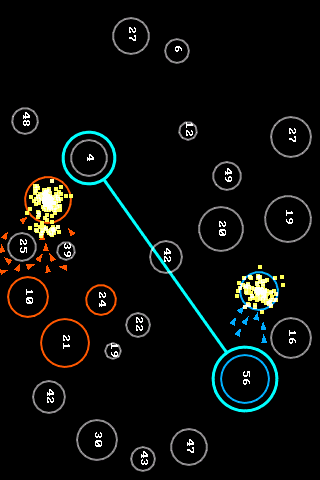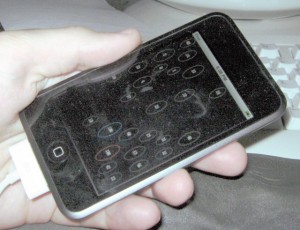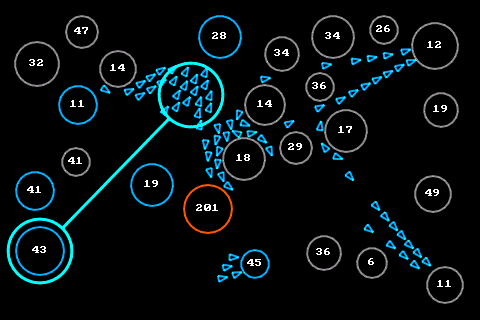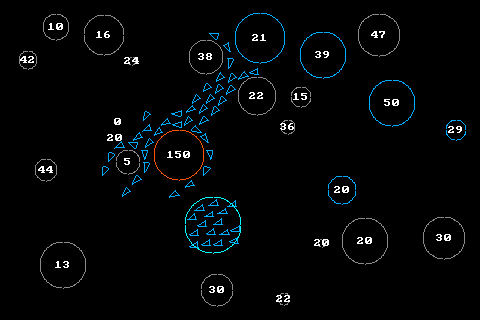iGalcon – touch input, orientation handling, and fun!
Tuesday, June 17th, 2008I had some pretty good progress today 🙂 I got touch input implemented and tweaked pretty well for playing the game. I also got in some crude orientation handling so that the numbers on the planets are readable from any normal orientation of the device. I also added in a simple AI player, adjusted planet sizes, and added simple particle effects.
Next up: improved graphics, font, and sound effects. I’m still pretty mystified by ObjC, but I’m getting by, I suppose. It amazes me how much boilerplate junk is in languages that are not python 😉 Ah well, that’s life I guess. On the practical side of things, I’m continuing to keep my SDL version of this working, so I can do work within my linux environment. I’m glad I did all that work on tinypy, as I feel pretty comfortable in C now.





